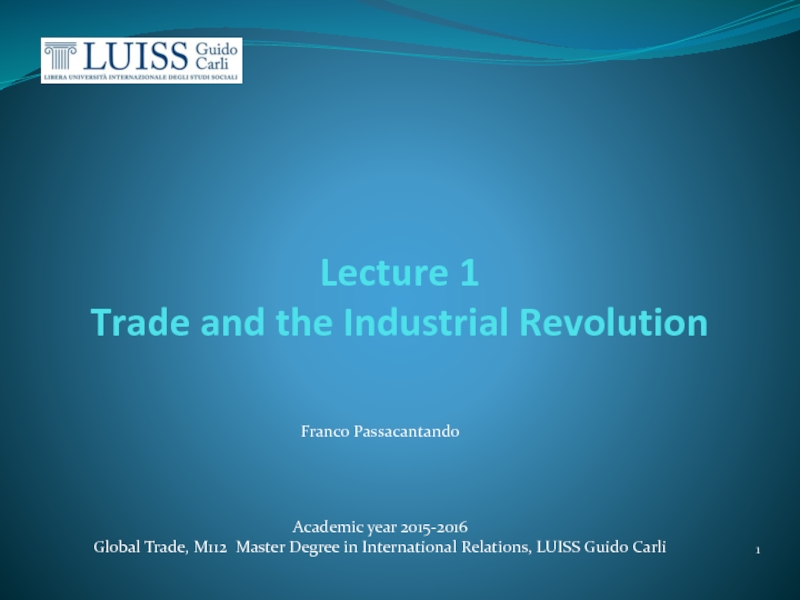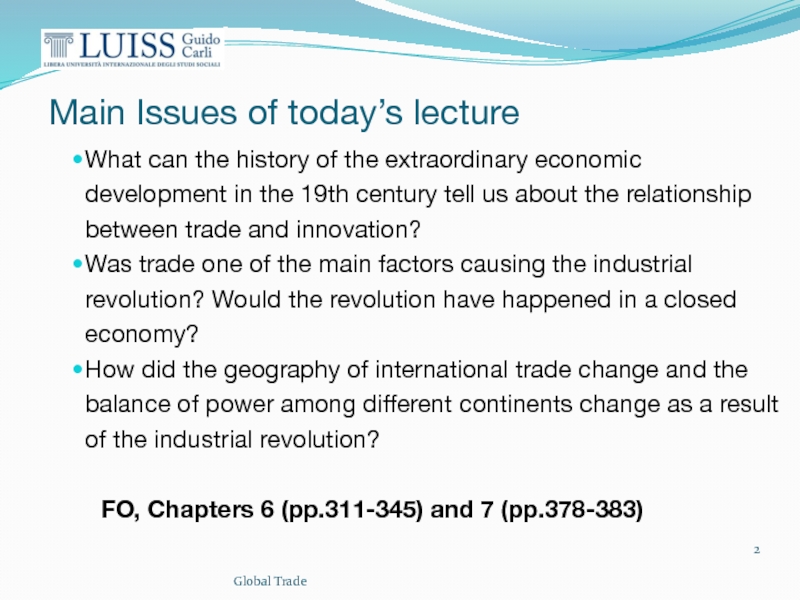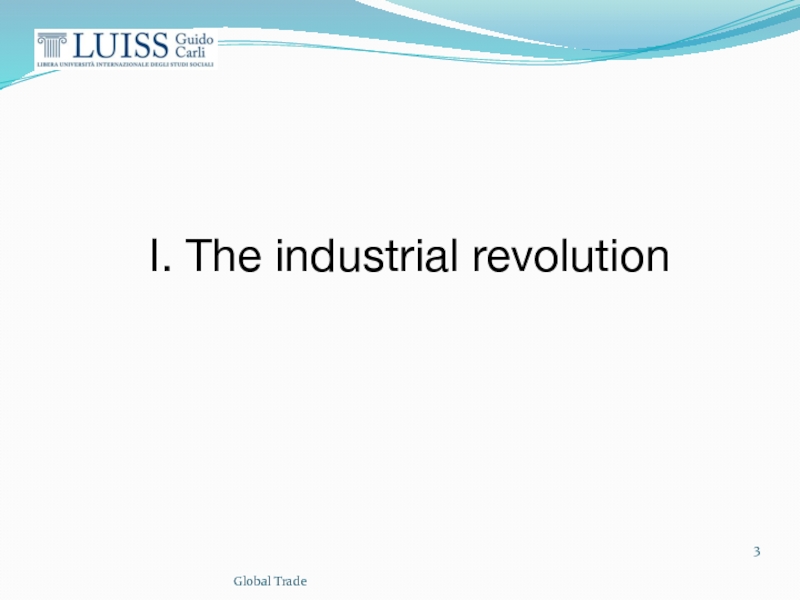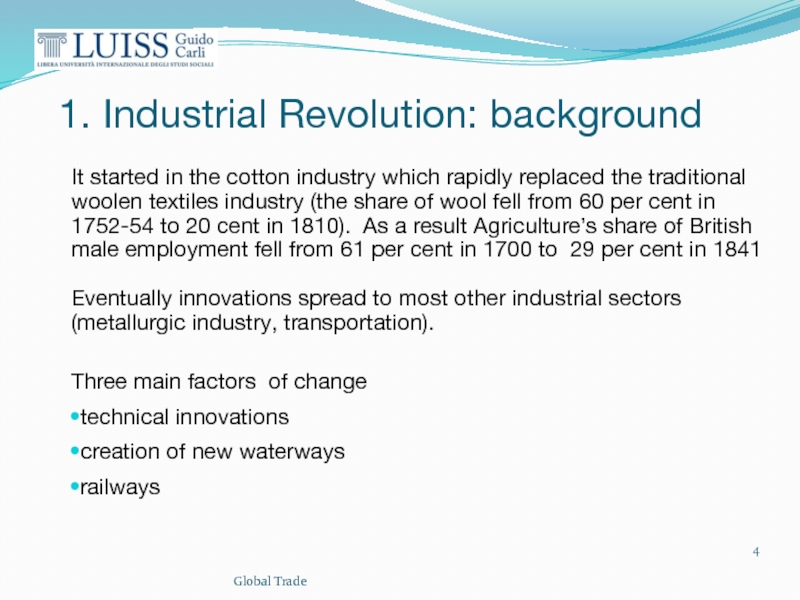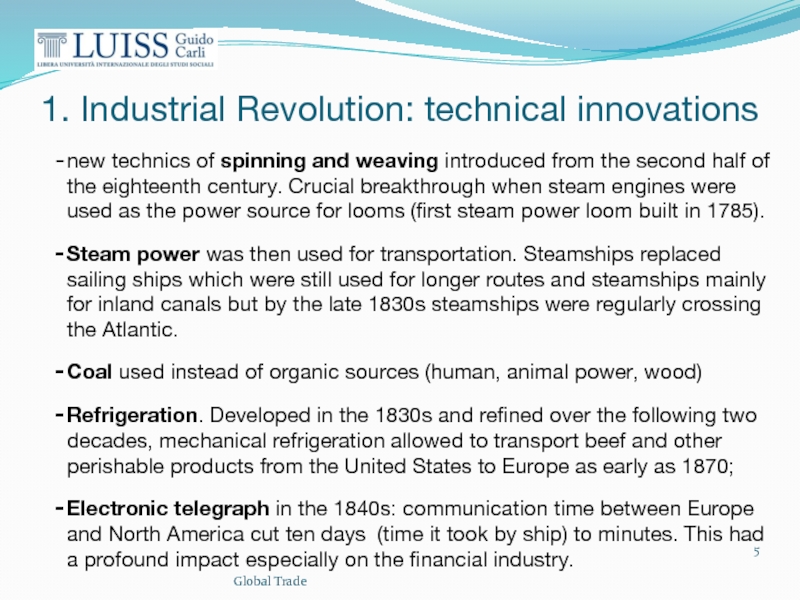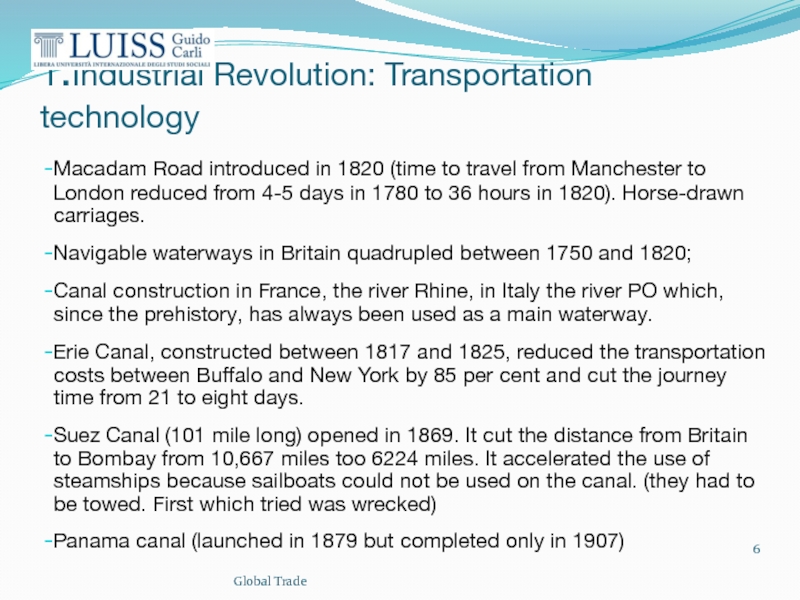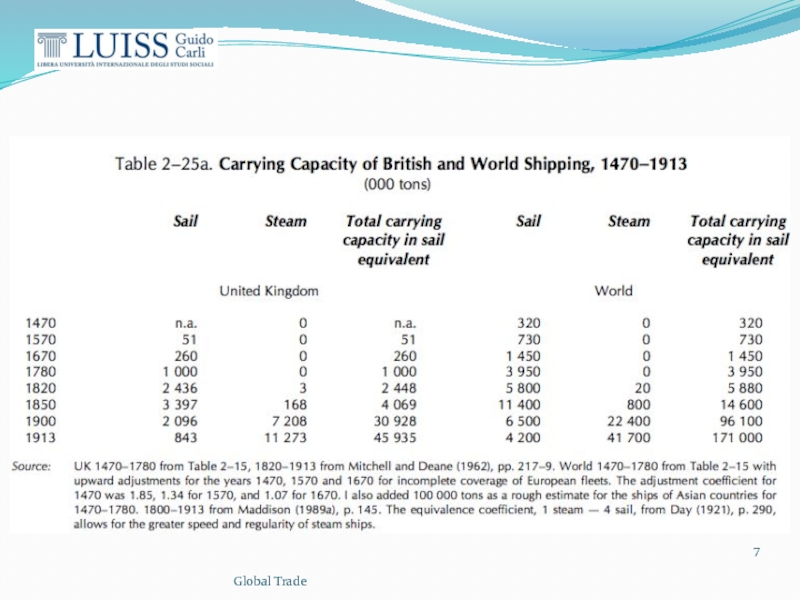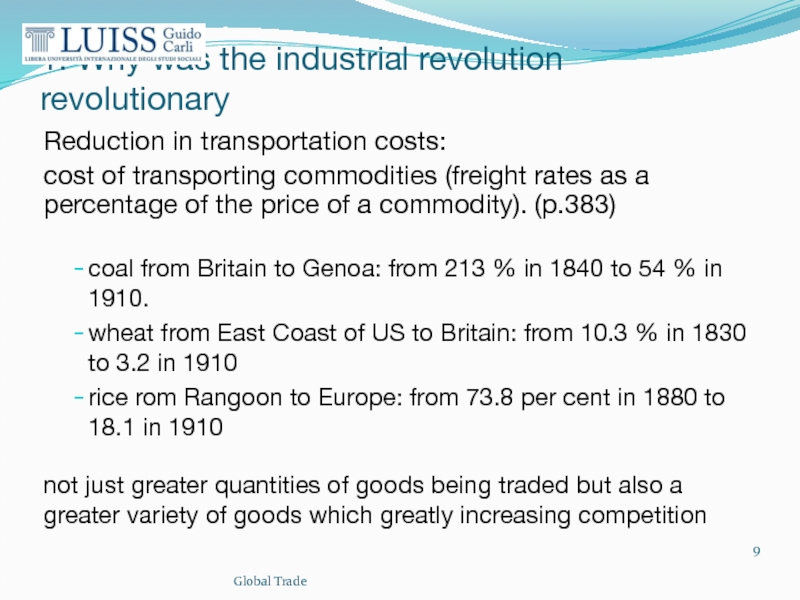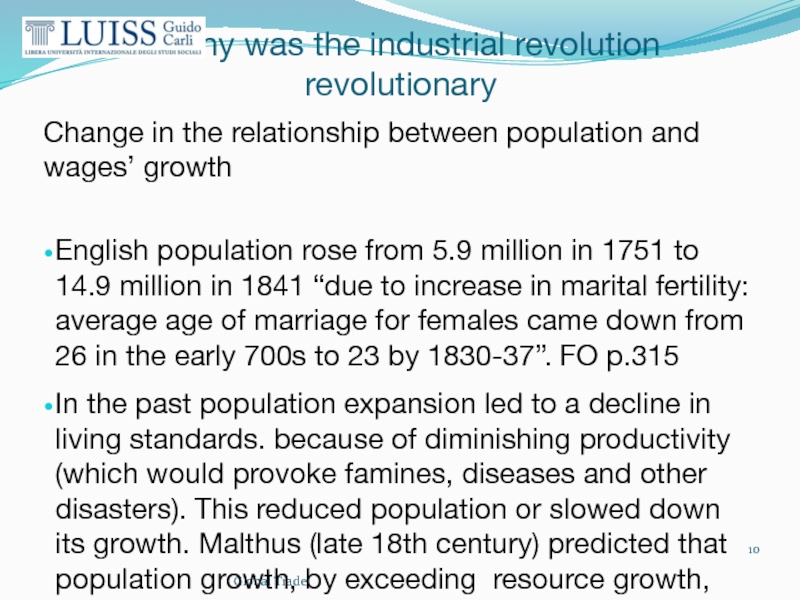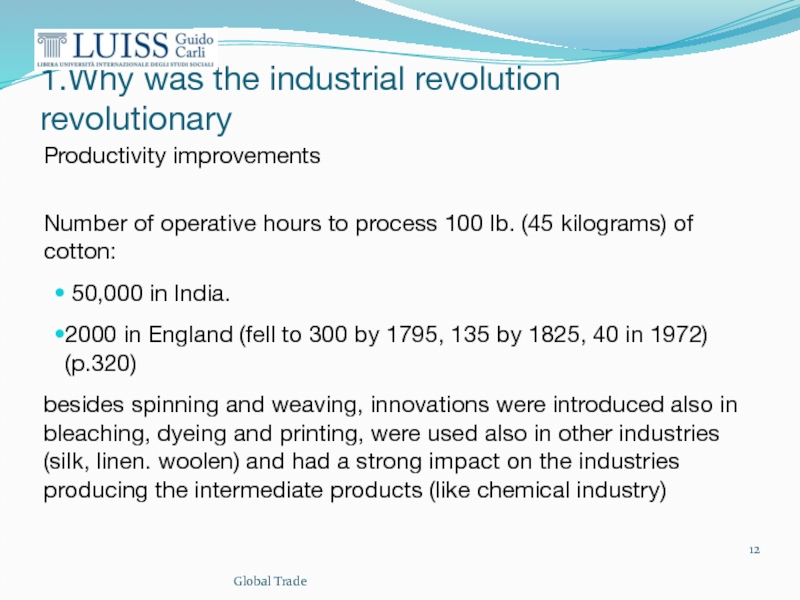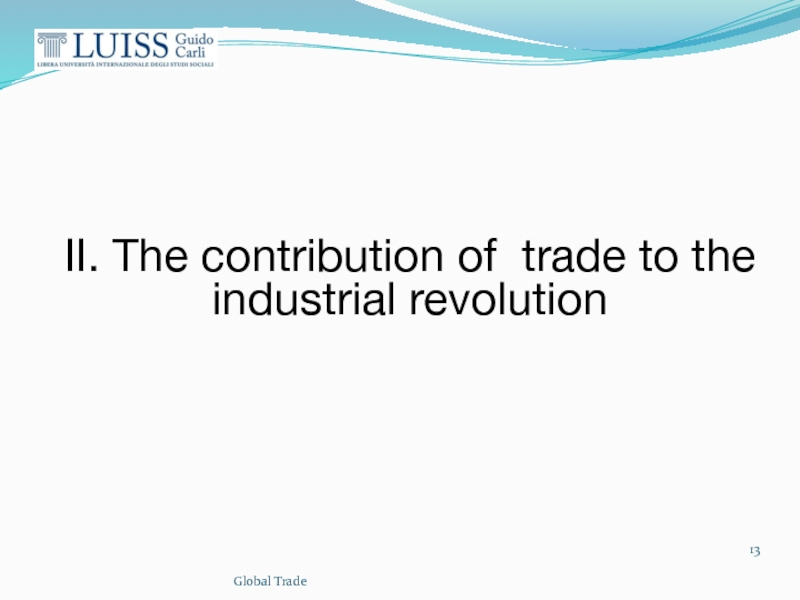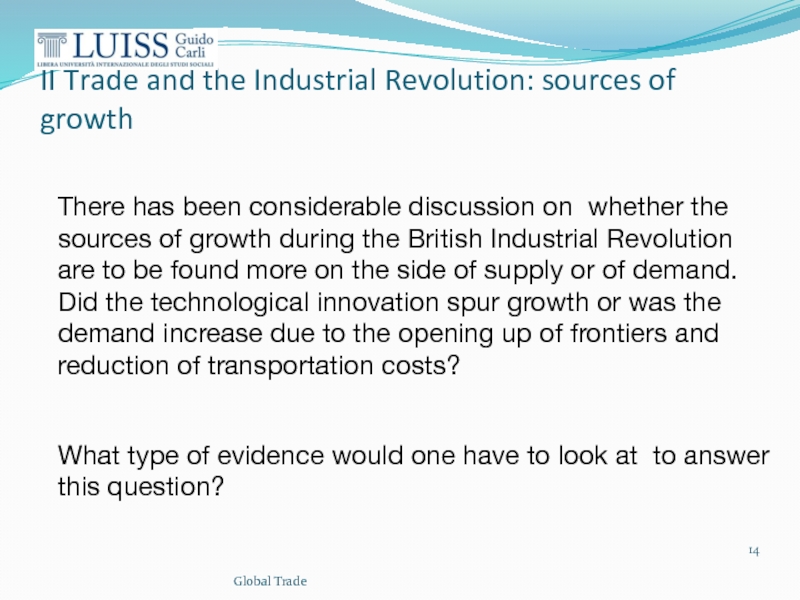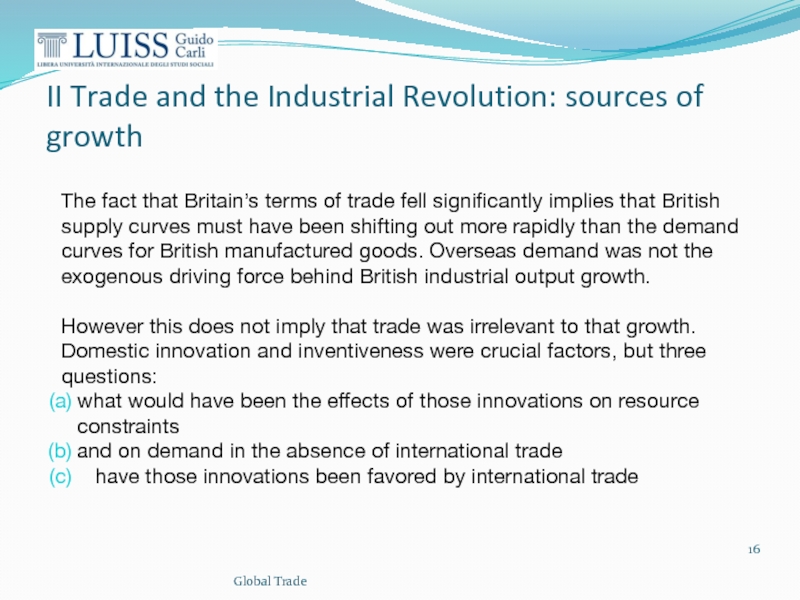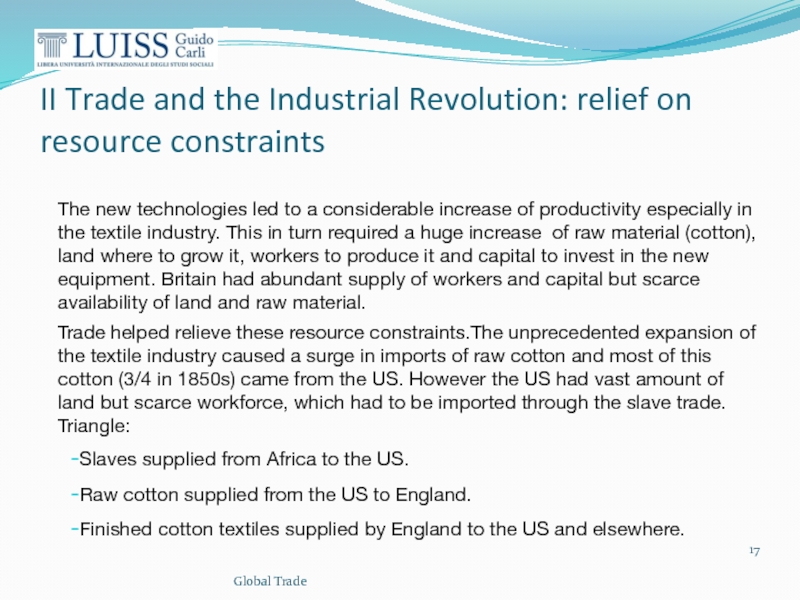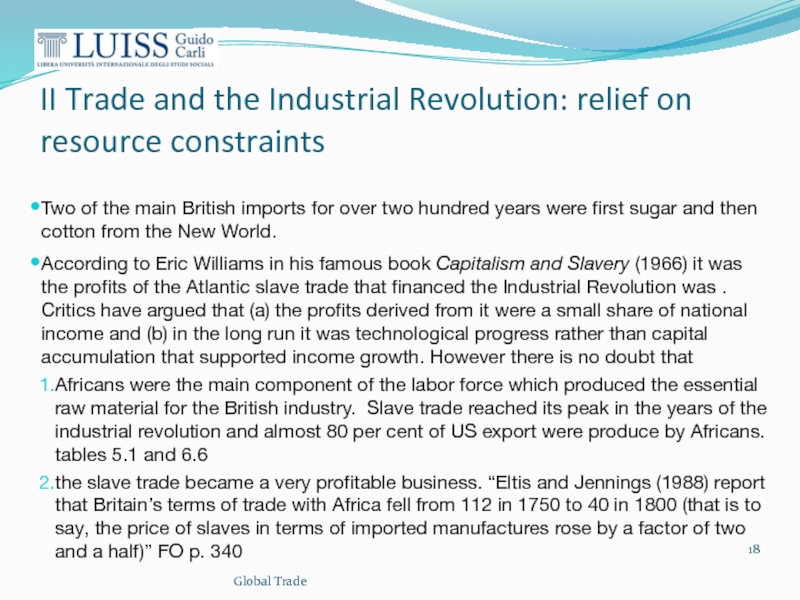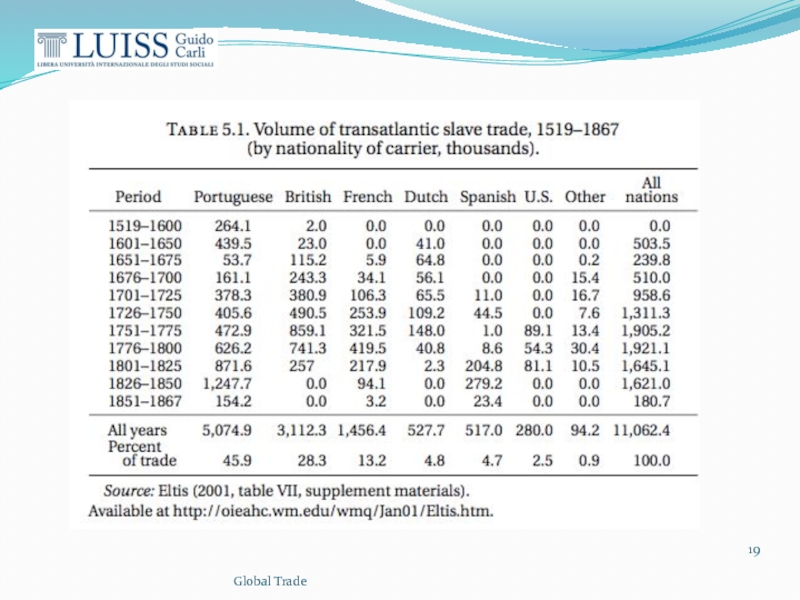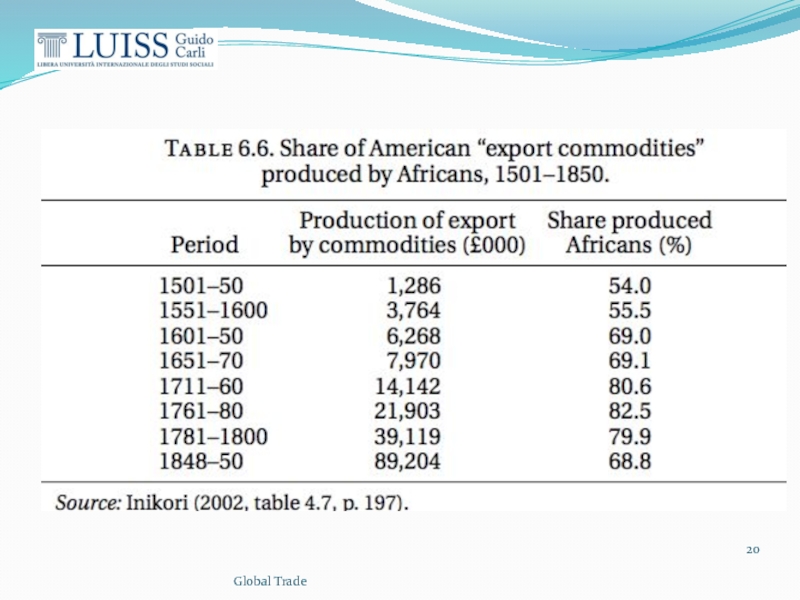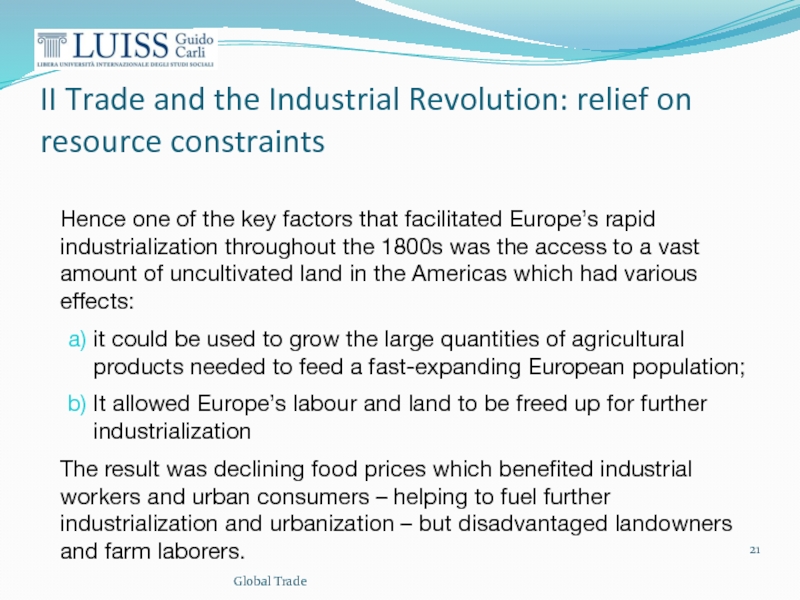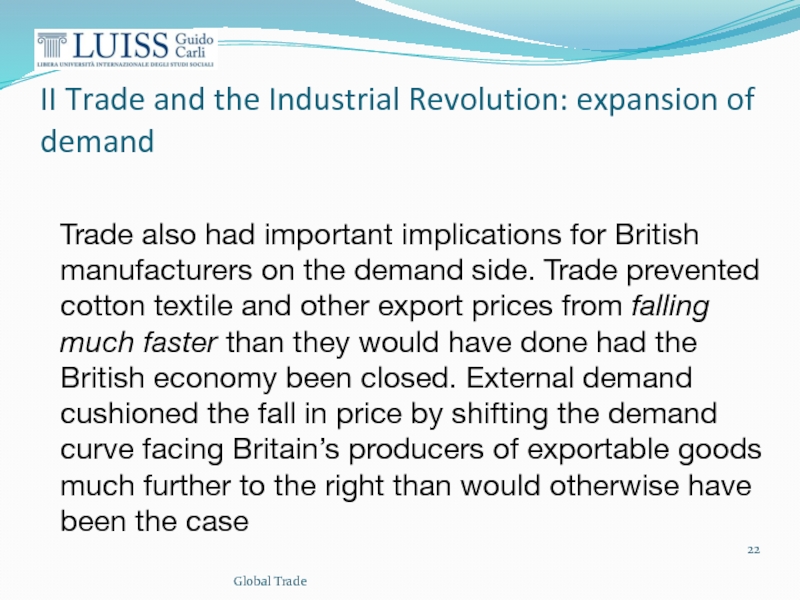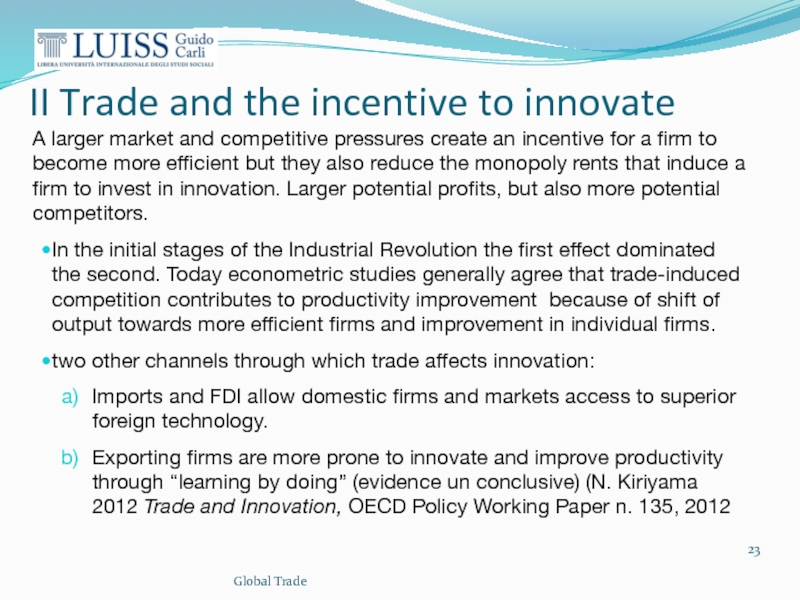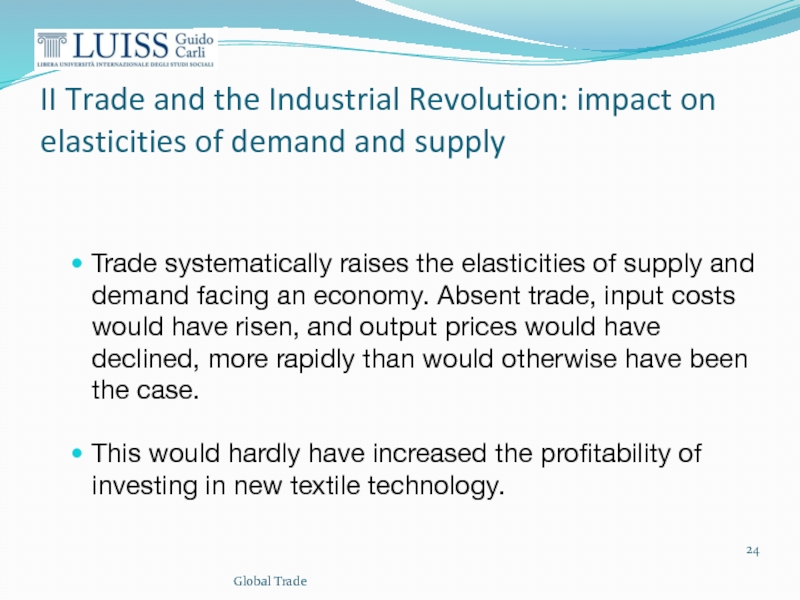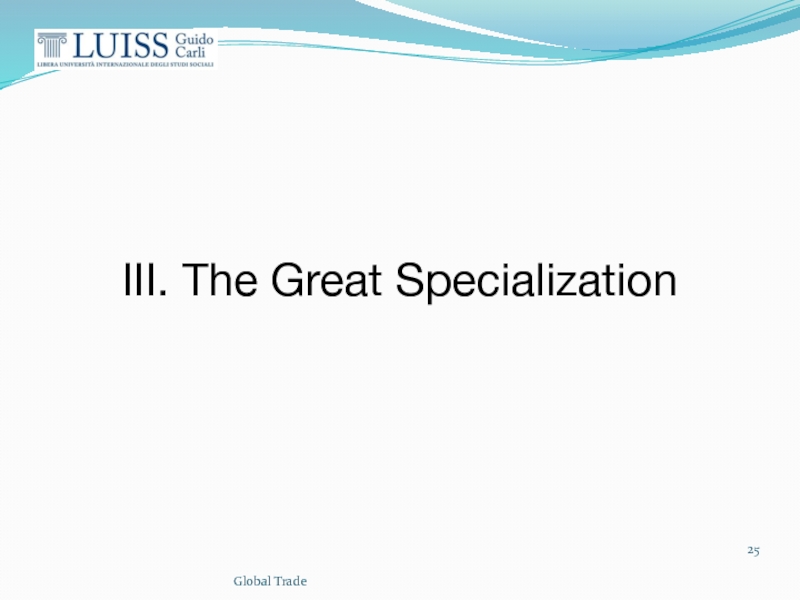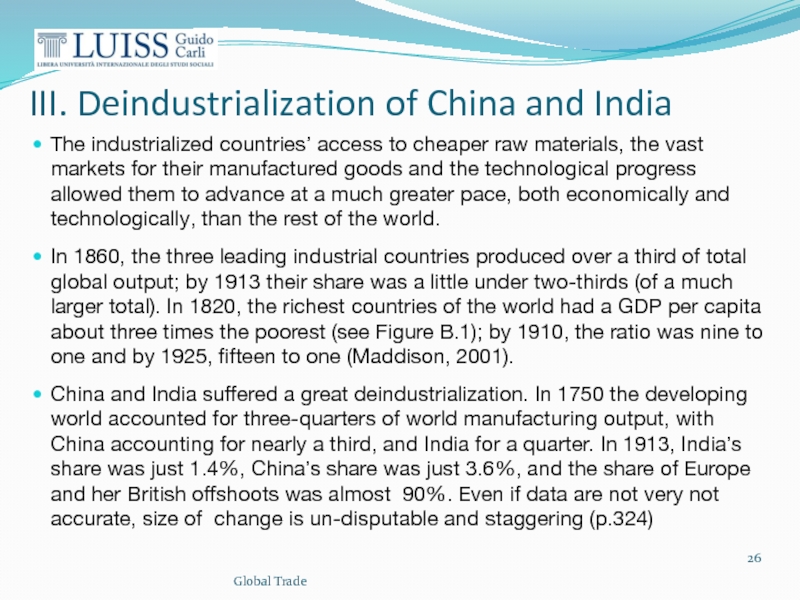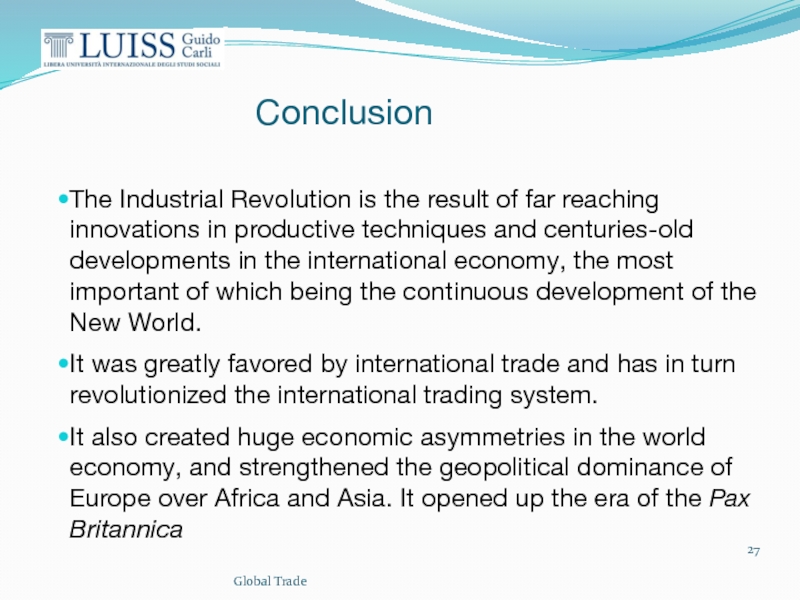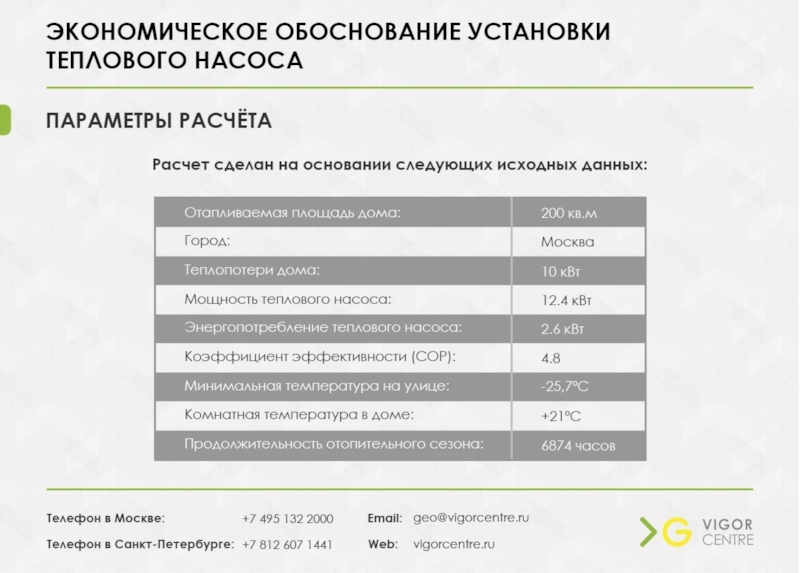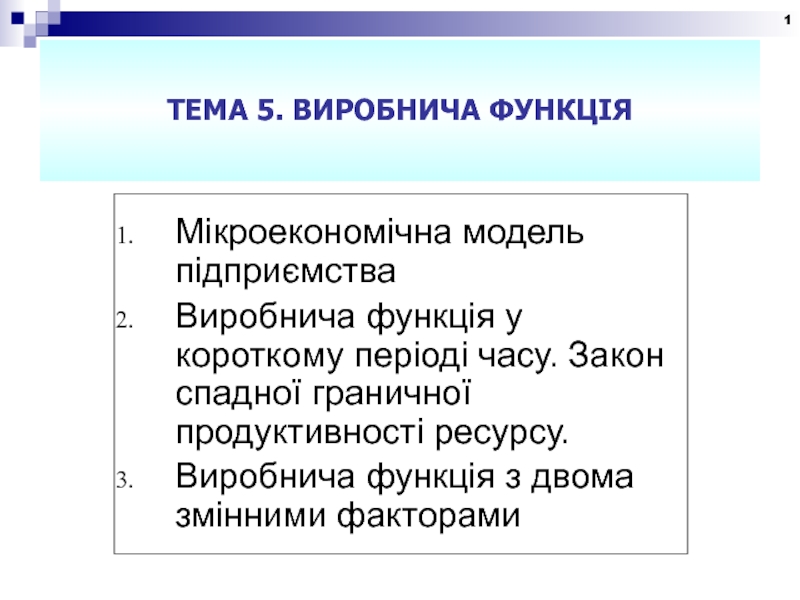- Главная
- Разное
- Дизайн
- Бизнес и предпринимательство
- Аналитика
- Образование
- Развлечения
- Красота и здоровье
- Финансы
- Государство
- Путешествия
- Спорт
- Недвижимость
- Армия
- Графика
- Культурология
- Еда и кулинария
- Лингвистика
- Английский язык
- Астрономия
- Алгебра
- Биология
- География
- Детские презентации
- Информатика
- История
- Литература
- Маркетинг
- Математика
- Медицина
- Менеджмент
- Музыка
- МХК
- Немецкий язык
- ОБЖ
- Обществознание
- Окружающий мир
- Педагогика
- Русский язык
- Технология
- Физика
- Философия
- Химия
- Шаблоны, картинки для презентаций
- Экология
- Экономика
- Юриспруденция
Trade and the industrial revolution. (Lecture 1) презентация
Содержание
- 1. Trade and the industrial revolution. (Lecture 1)
- 2. Global Trade Main Issues of today’s lecture
- 3. Global Trade I. The industrial revolution
- 4. Global Trade It started in
- 5. Global Trade 1. Industrial Revolution: technical innovations
- 6. Global Trade 1.Industrial Revolution: Transportation technology Macadam
- 7. Global Trade
- 8. Global Trade 1. Industrial Revolution: Railways
- 9. Global Trade 1. Why was the industrial
- 10. Global Trade 1.Why was the industrial revolution
- 11. Global Trade
- 12. Global Trade 1.Why was the industrial revolution
- 13. Global Trade II. The contribution of trade to the industrial revolution
- 14. Global Trade II Trade and the Industrial
- 15. Global Trade
- 16. Global Trade II Trade and the Industrial
- 17. Global Trade II Trade and the Industrial
- 18. Global Trade II Trade and the Industrial
- 19. Global Trade
- 20. Global Trade
- 21. Global Trade II Trade and the Industrial
- 22. Global Trade II Trade and the Industrial
- 23. Global Trade II Trade and the incentive
- 24. Global Trade II Trade and the Industrial
- 25. Global Trade III. The Great Specialization
- 26. Global Trade III. Deindustrialization of China and
- 27. Global Trade Conclusion The Industrial Revolution is
Слайд 1Lecture 1
Trade and the Industrial Revolution
Franco Passacantando
Academic year 2015-2016
Global Trade,
Слайд 2Global Trade
Main Issues of today’s lecture
What can the history of
Was trade one of the main factors causing the industrial revolution? Would the revolution have happened in a closed economy?
How did the geography of international trade change and the balance of power among different continents change as a result of the industrial revolution?
FO, Chapters 6 (pp.311-345) and 7 (pp.378-383)
Слайд 4Global Trade
It started in the cotton industry which rapidly replaced the
Eventually innovations spread to most other industrial sectors (metallurgic industry, transportation).
Three main factors of change
technical innovations
creation of new waterways
railways
1. Industrial Revolution: background
Слайд 5Global Trade
1. Industrial Revolution: technical innovations
new technics of spinning and
Steam power was then used for transportation. Steamships replaced sailing ships which were still used for longer routes and steamships mainly for inland canals but by the late 1830s steamships were regularly crossing the Atlantic.
Coal used instead of organic sources (human, animal power, wood)
Refrigeration. Developed in the 1830s and refined over the following two decades, mechanical refrigeration allowed to transport beef and other perishable products from the United States to Europe as early as 1870;
Electronic telegraph in the 1840s: communication time between Europe and North America cut ten days (time it took by ship) to minutes. This had a profound impact especially on the financial industry.
Слайд 6Global Trade
1.Industrial Revolution: Transportation technology
Macadam Road introduced in 1820 (time to
Navigable waterways in Britain quadrupled between 1750 and 1820;
Canal construction in France, the river Rhine, in Italy the river PO which, since the prehistory, has always been used as a main waterway.
Erie Canal, constructed between 1817 and 1825, reduced the transportation costs between Buffalo and New York by 85 per cent and cut the journey time from 21 to eight days.
Suez Canal (101 mile long) opened in 1869. It cut the distance from Britain to Bombay from 10,667 miles too 6224 miles. It accelerated the use of steamships because sailboats could not be used on the canal. (they had to be towed. First which tried was wrecked)
Panama canal (launched in 1879 but completed only in 1907)
Слайд 8Global Trade
1. Industrial Revolution: Railways
1825: world’s first rail line, the Stockton
1869: A transcontinental line linked the East and West coasts of the United States;
1885: the Canadian-Pacific railroad was completed;
In the decade prior to the First World War main railways were built in Argentina, India, Australia, China and elsewhere, largely financed by British capital. India was the fourth country in the world in terms of total railway mileage.
From virtually nothing in 1826, almost a million kilometers of rail had been built by 1913 (Maddison, 2008).
Слайд 9Global Trade
1. Why was the industrial revolution revolutionary
Reduction in transportation costs:
cost
coal from Britain to Genoa: from 213 % in 1840 to 54 % in 1910.
wheat from East Coast of US to Britain: from 10.3 % in 1830 to 3.2 in 1910
rice rom Rangoon to Europe: from 73.8 per cent in 1880 to 18.1 in 1910
not just greater quantities of goods being traded but also a greater variety of goods which greatly increasing competition
Слайд 10Global Trade
1.Why was the industrial revolution revolutionary
Change in the relationship between
English population rose from 5.9 million in 1751 to 14.9 million in 1841 “due to increase in marital fertility: average age of marriage for females came down from 26 in the early 700s to 23 by 1830-37”. FO p.315
In the past population expansion led to a decline in living standards. because of diminishing productivity (which would provoke famines, diseases and other disasters). This reduced population or slowed down its growth. Malthus (late 18th century) predicted that population growth, by exceeding resource growth, would lead to catastrophes.
This did not happen. In fact real wages increased. From the industrial revolution on population growth ceases to vary endogenously, thanks to technical progress.
New land (in the US) and coal allowed Europe the escape the curse of diminishing returns
Слайд 12Global Trade
1.Why was the industrial revolution revolutionary
Productivity improvements
Number of operative hours
50,000 in India.
2000 in England (fell to 300 by 1795, 135 by 1825, 40 in 1972) (p.320)
besides spinning and weaving, innovations were introduced also in bleaching, dyeing and printing, were used also in other industries (silk, linen. woolen) and had a strong impact on the industries producing the intermediate products (like chemical industry)
Слайд 14Global Trade
II Trade and the Industrial Revolution: sources of growth
There has
What type of evidence would one have to look at to answer this question?
Слайд 16Global Trade
II Trade and the Industrial Revolution: sources of growth
The fact
However this does not imply that trade was irrelevant to that growth. Domestic innovation and inventiveness were crucial factors, but three questions:
what would have been the effects of those innovations on resource constraints
and on demand in the absence of international trade
have those innovations been favored by international trade
Слайд 17Global Trade
II Trade and the Industrial Revolution: relief on resource constraints
The
Trade helped relieve these resource constraints.The unprecedented expansion of the textile industry caused a surge in imports of raw cotton and most of this cotton (3/4 in 1850s) came from the US. However the US had vast amount of land but scarce workforce, which had to be imported through the slave trade. Triangle:
Slaves supplied from Africa to the US.
Raw cotton supplied from the US to England.
Finished cotton textiles supplied by England to the US and elsewhere.
Слайд 18Global Trade
II Trade and the Industrial Revolution: relief on resource constraints
Two
According to Eric Williams in his famous book Capitalism and Slavery (1966) it was the profits of the Atlantic slave trade that financed the Industrial Revolution was . Critics have argued that (a) the profits derived from it were a small share of national income and (b) in the long run it was technological progress rather than capital accumulation that supported income growth. However there is no doubt that
Africans were the main component of the labor force which produced the essential raw material for the British industry. Slave trade reached its peak in the years of the industrial revolution and almost 80 per cent of US export were produce by Africans. tables 5.1 and 6.6
the slave trade became a very profitable business. “Eltis and Jennings (1988) report that Britain’s terms of trade with Africa fell from 112 in 1750 to 40 in 1800 (that is to say, the price of slaves in terms of imported manufactures rose by a factor of two and a half)” FO p. 340
Слайд 21Global Trade
II Trade and the Industrial Revolution: relief on resource constraints
Hence
it could be used to grow the large quantities of agricultural products needed to feed a fast-expanding European population;
It allowed Europe’s labour and land to be freed up for further industrialization
The result was declining food prices which benefited industrial workers and urban consumers – helping to fuel further industrialization and urbanization – but disadvantaged landowners and farm laborers.
Слайд 22Global Trade
II Trade and the Industrial Revolution: expansion of demand
Trade also
Слайд 23Global Trade
II Trade and the incentive to innovate
A larger market and
In the initial stages of the Industrial Revolution the first effect dominated the second. Today econometric studies generally agree that trade-induced competition contributes to productivity improvement because of shift of output towards more efficient firms and improvement in individual firms.
two other channels through which trade affects innovation:
Imports and FDI allow domestic firms and markets access to superior foreign technology.
Exporting firms are more prone to innovate and improve productivity through “learning by doing” (evidence un conclusive) (N. Kiriyama 2012 Trade and Innovation, OECD Policy Working Paper n. 135, 2012
Слайд 24Global Trade
II Trade and the Industrial Revolution: impact on elasticities of
Trade systematically raises the elasticities of supply and demand facing an economy. Absent trade, input costs would have risen, and output prices would have declined, more rapidly than would otherwise have been the case.
This would hardly have increased the profitability of investing in new textile technology.
Слайд 26Global Trade
III. Deindustrialization of China and India
The industrialized countries’ access to
In 1860, the three leading industrial countries produced over a third of total global output; by 1913 their share was a little under two-thirds (of a much larger total). In 1820, the richest countries of the world had a GDP per capita about three times the poorest (see Figure B.1); by 1910, the ratio was nine to one and by 1925, fifteen to one (Maddison, 2001).
China and India suffered a great deindustrialization. In 1750 the developing world accounted for three-quarters of world manufacturing output, with China accounting for nearly a third, and India for a quarter. In 1913, India’s share was just 1.4%, China’s share was just 3.6%, and the share of Europe and her British offshoots was almost 90%. Even if data are not very not accurate, size of change is un-disputable and staggering (p.324)
Слайд 27Global Trade
Conclusion
The Industrial Revolution is the result of far reaching innovations
It was greatly favored by international trade and has in turn revolutionized the international trading system.
It also created huge economic asymmetries in the world economy, and strengthened the geopolitical dominance of Europe over Africa and Asia. It opened up the era of the Pax Britannica
